This is one of a series of articles about the ports visited on the Viking Cruises Empires of the Mediterranean cruise taken in May 2019 – yes, before the coronavirus changed our lives!
The island of Corfu is set in the beautiful Ionian Sea, and we arrived and docked very early in the morning and took a coach tour of some of the island, ending up overlooking the airport (which I agree doesn’t sound great), but it also overlooks the small island of Pontikonisi, more commonly known as Mouse Island. This is the location of the Byzantine chapel of Pantokrator and in front of it is the Vlacherna monastery. Why Mouse Island? I guess there are probably mice there, but apparently the path to the summit of the small island looks like a mouse tail from a distance!
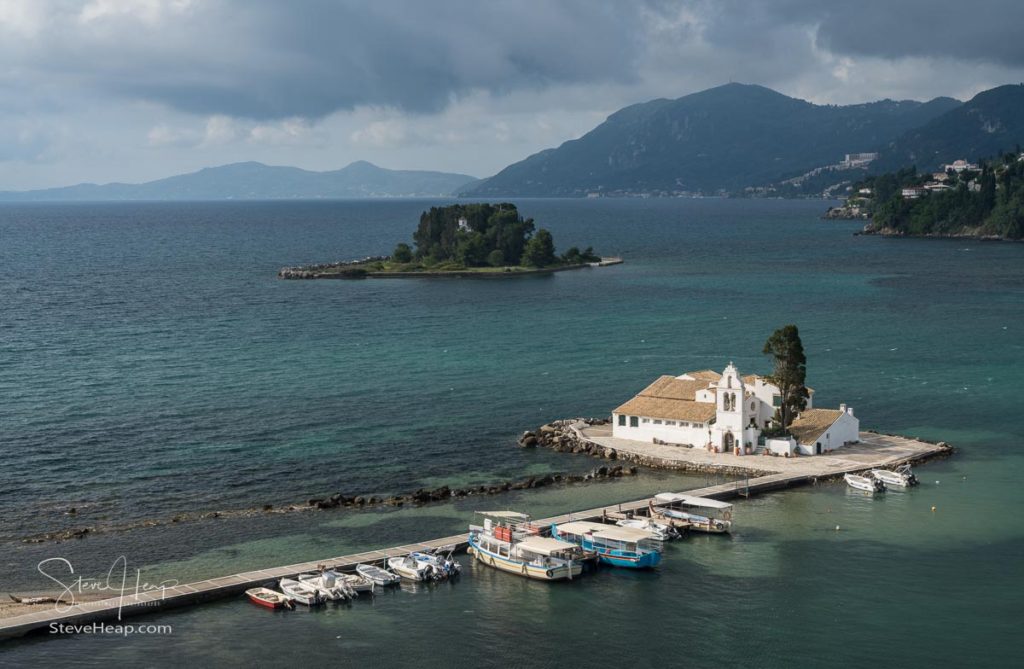
We were given a short tour of the old town of Corfu (or Kerkyra in Greek) and had time to wander before the coach left for the ship – but I decided that a tour of the old fortress was more intriguing! The weather was also improving, which certainly added to the excitement. The entrance to the old fortress is imposing in itself. Kerkyra has been a key location for centuries and in the fifth century BC, was known as one of the three great naval powers of Greece. The Romans, of course, managed the island for many years, and the Venetians took over the island in 1386 and controlled it until 1797 rebuffing many attempts to over-run the area by the Ottoman Empire during those years. The Venetian architecture in much of the old town is a reminder of those times and the old town has now been added to the UNESCO list of World Heritage sites.
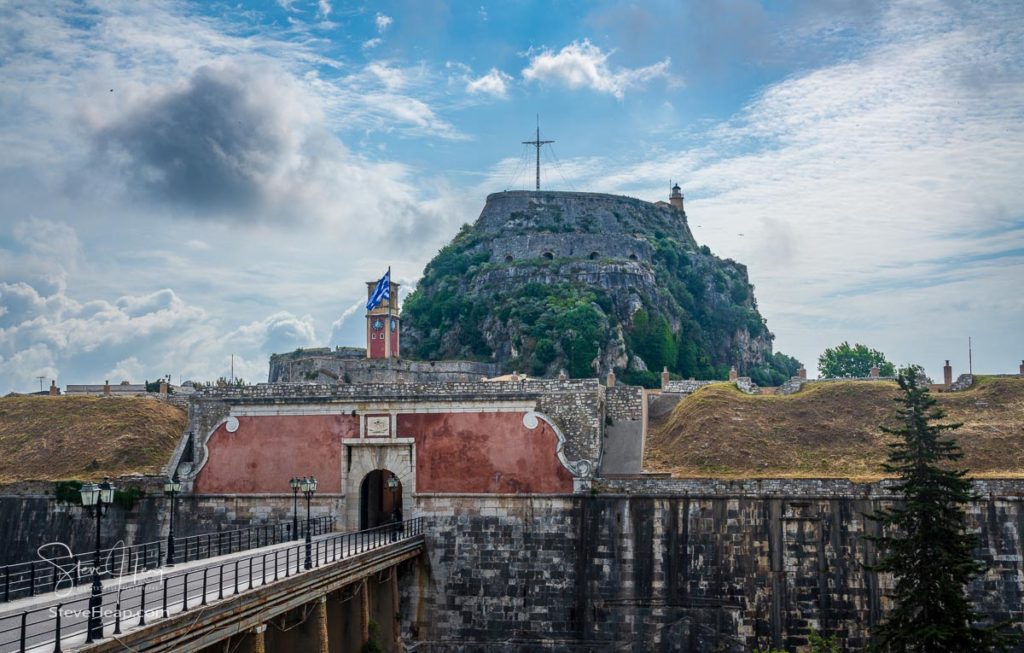
The interior of the fortress has many intriguing buildings such as this clock tower that definitely looks Venetian, although I have been unable to find out when it was actually built:
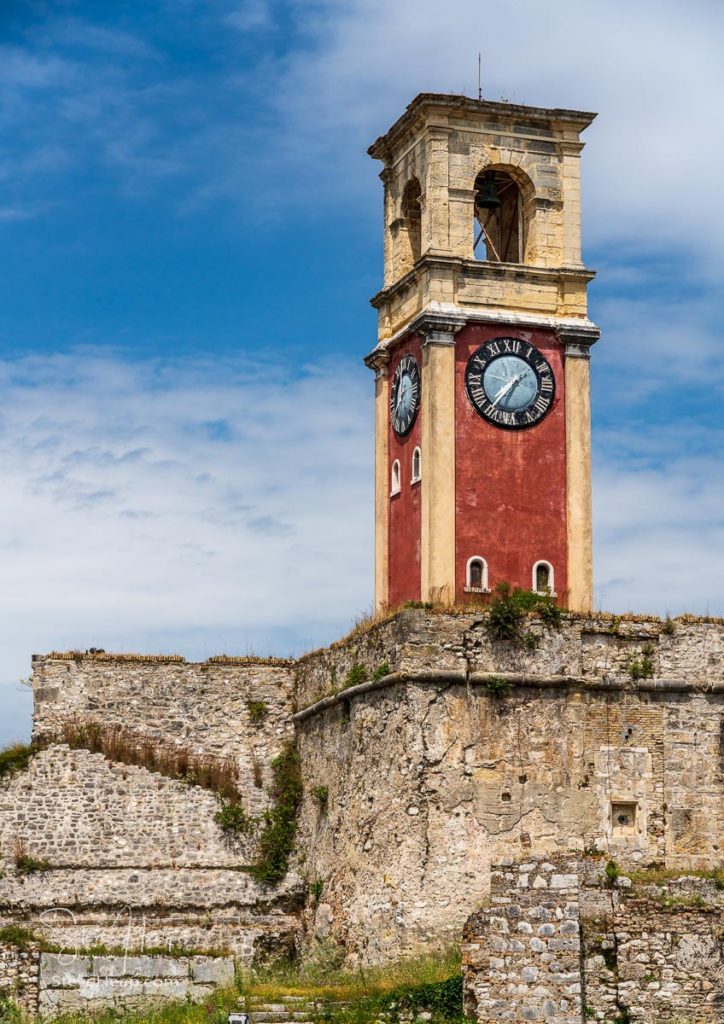
After a spell when the Russians held the island, it went back to France and then after the defeat of Napoleon, it was passed to Great Britain in 1815 as the United States of the Ionian Islands. So, I guess the UK got the US back at that stage! But more was to come – Greece elected a new King – Prince Wilhelm of Denmark and he came with a coronation gift from, presumably, Queen Victoria, of the Ionian Islands and so in 1864 they, along with Corfu, were formally transferred back to Greece.
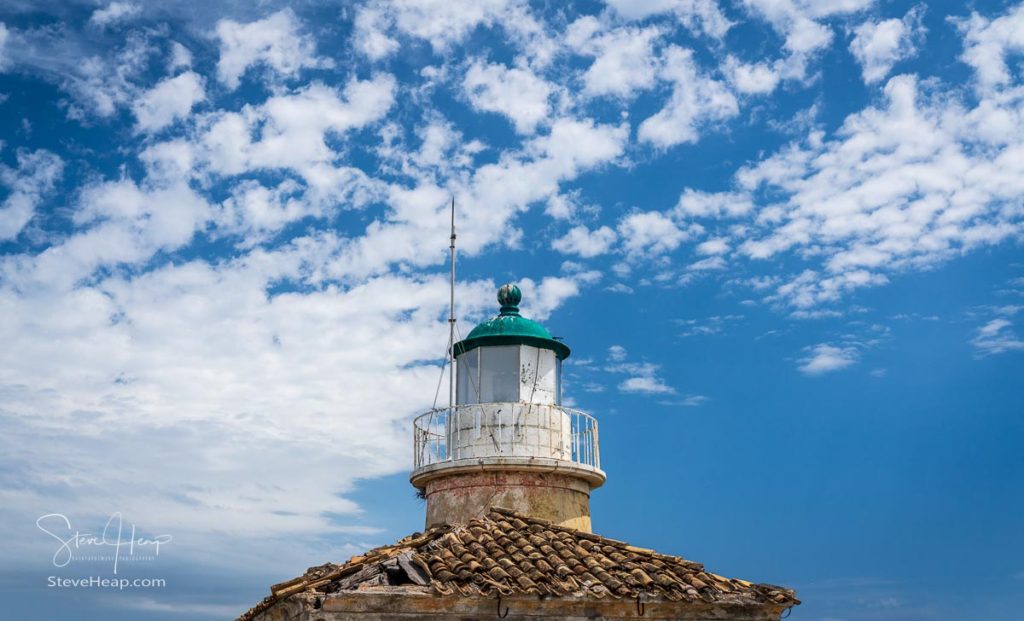
There is a lot of influence from that period – this lighthouse, I think and also some barracks buildings inside the fortress, but those aren’t very picturesque!
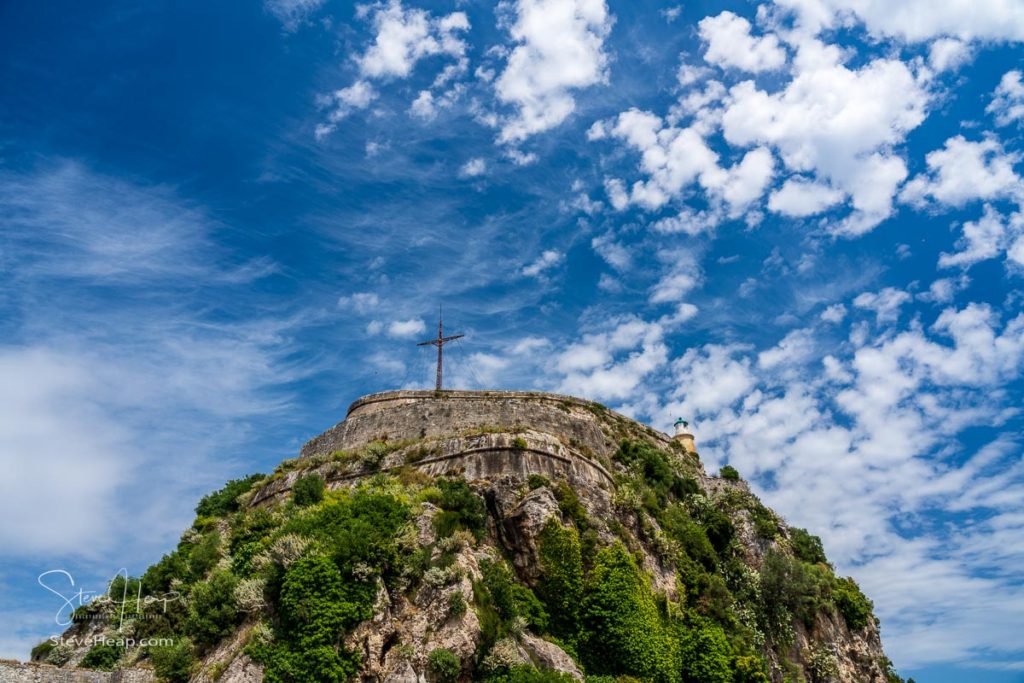
For those familiar with British TV, there was a great series about the early life of the Durrells who left England to live in relative poverty in Corfu. One of the sons, Lawrence, became a famous author and travel writer, and his younger brother, Gerald, became an even more famous, perhaps, naturalist, zookeeper and TV personality. There are busts of both of them outside the fortress, which I thought would make a great pair of images converted to black and white:
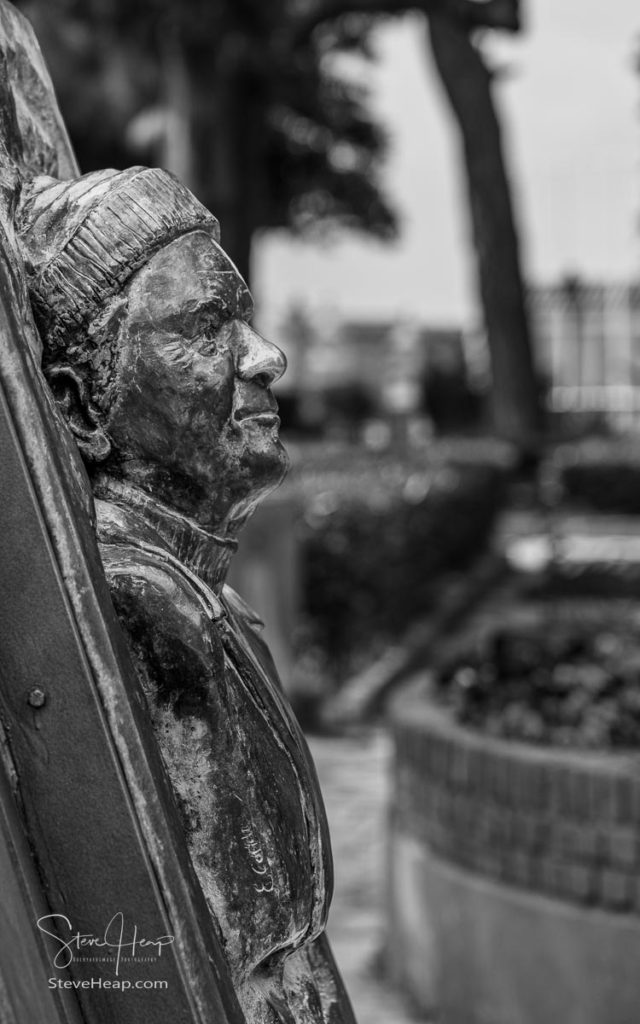
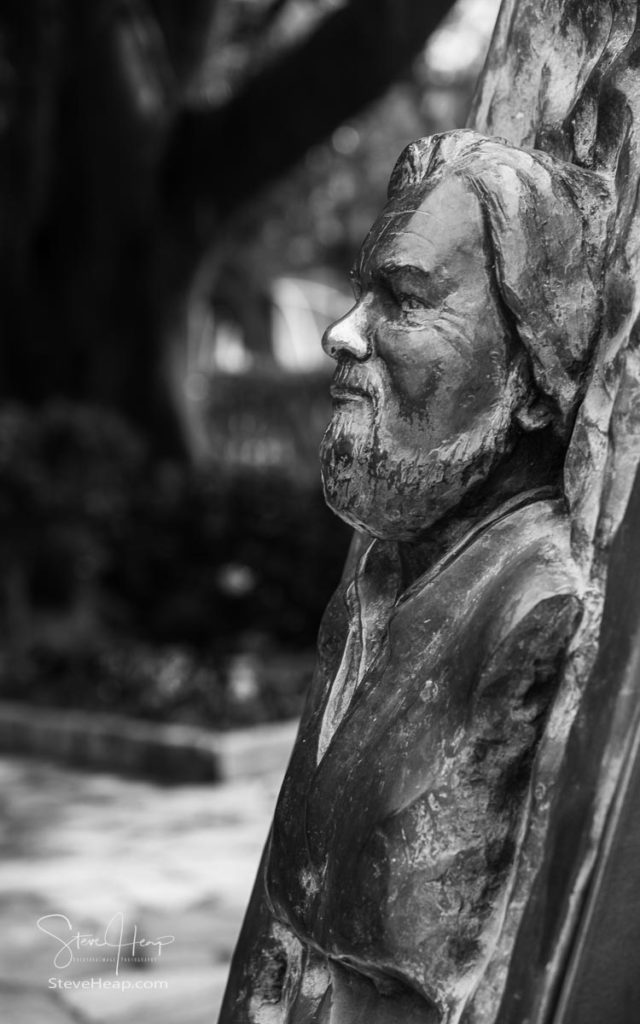
While I was wandering around this square, I noticed a pottery jar with small flowers growing out of it. Perfect for a bit of digital painting, I thought!
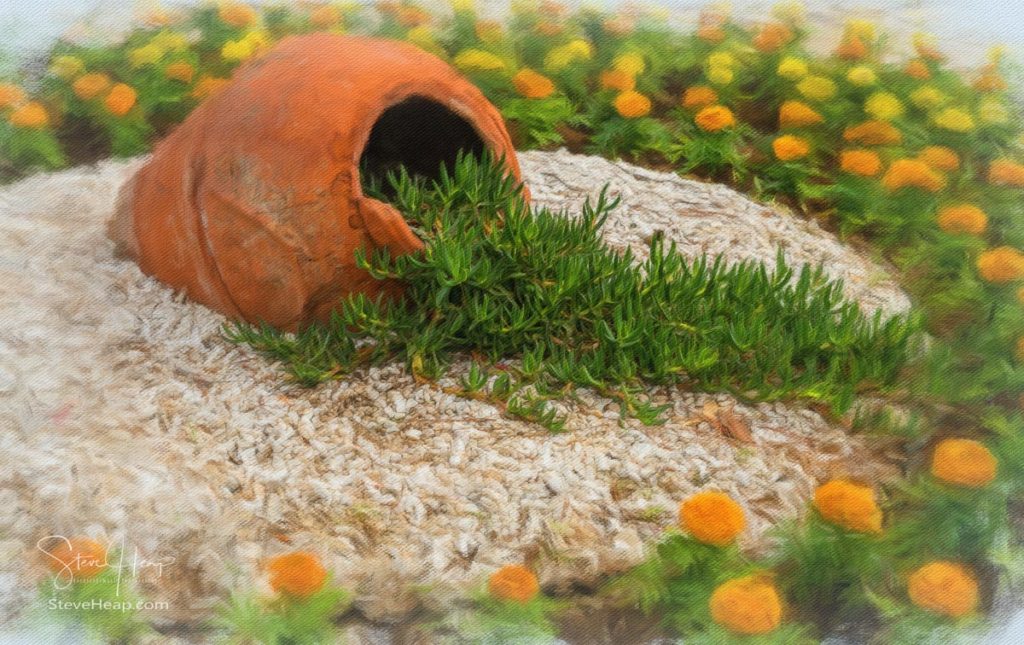
Walking back towards the harbor and the ship, I noticed a small hotel with a beautiful restaurant terrace and views of the old town:
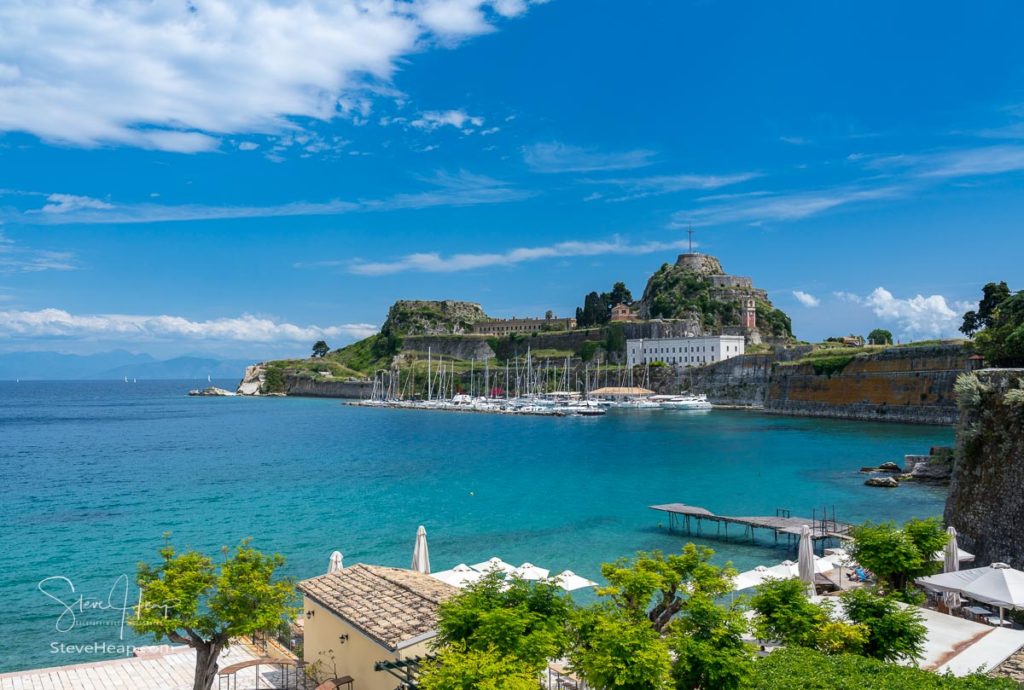
I believe it is the Faliraki beach and seaside restaurant – it does look to be in a perfect position!
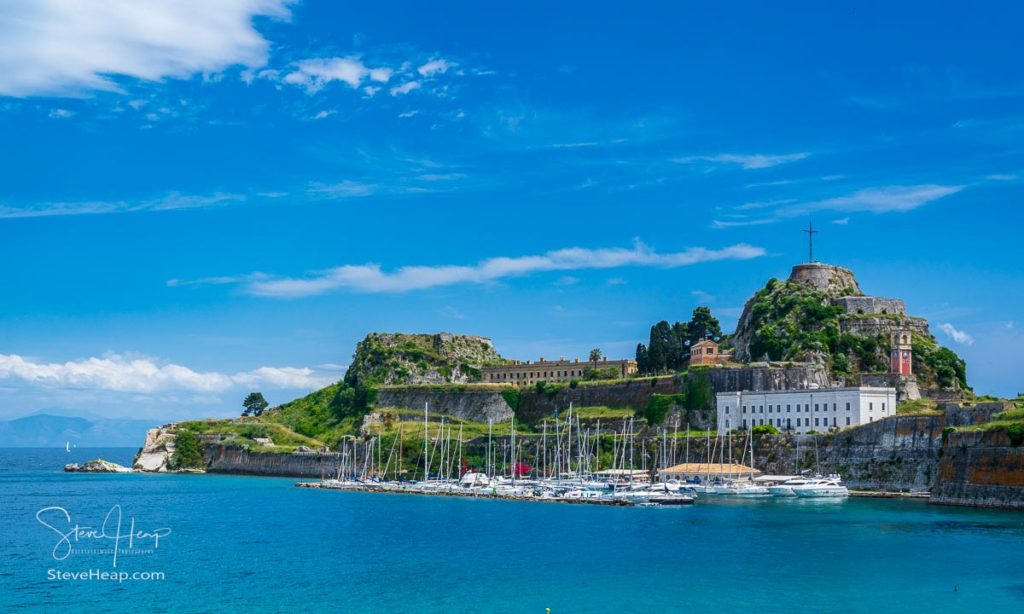
Finally, back on board and after a cool beer, it was time to say goodbye to the beautiful island of Corfu and continue the journey to Kotor.
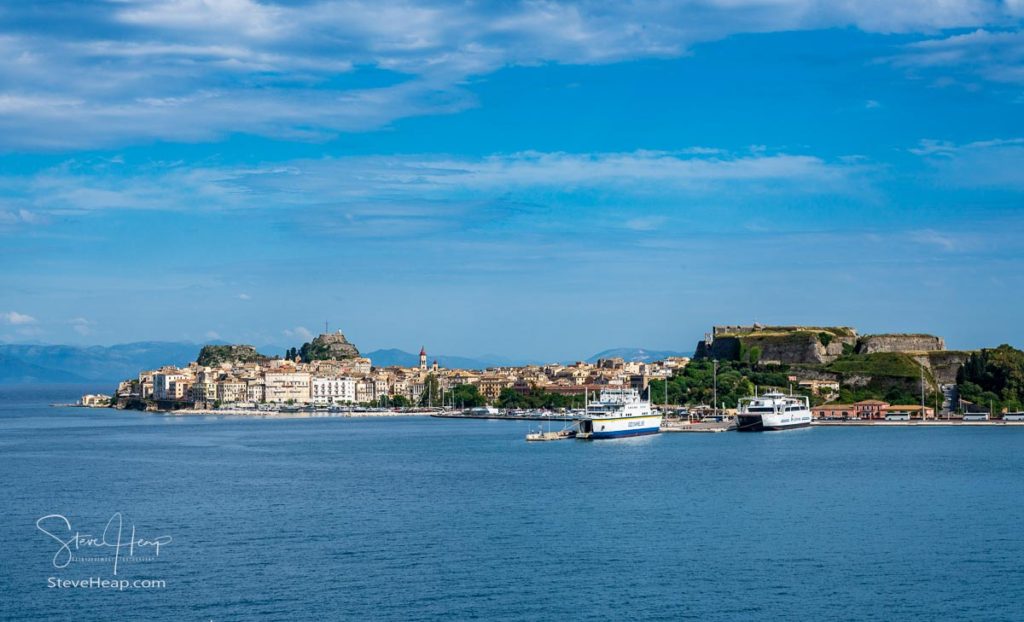
You can find the next article in this series about the Empires of the Mediterranean Cruise here. Our arrival in the beautiful city of Kotor. Incidentally, my prints are available in Europe as well as the USA and Canada via this “Print on Demand” site.

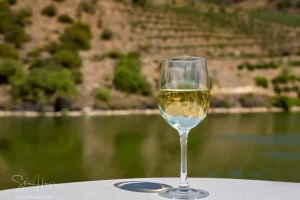
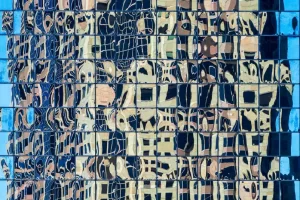

Katrina Gunn
7 Sep 2022So much history in that part of the world!
Bob Decker
7 Sep 2022Excellent story and supporting photos. Looking forward to the next installment.
Anne Haile
10 Sep 2022I do love Corfu, Your excellent photos and story have reminded me to go back again soon
Steve Heap
10 Sep 2022Yes, we did enjoy what we saw there! And thanks for your nice comments about my photos!